Here is the setup I use.

Since the DAQ system is only able to read voltages first I record the voltages by a shunt resistor. But I need the "current values" at the end. Transducer will make the current vary between 4 to 20 mA.
If the resistance is constant with respect to current one could just divide the voltage readings to resistance and obtain the current in the loop.
But I observed that the resistance is not the same for different currents. For example for a constant applied 20mA current the resistance is 248.74ohm and for 4 mA 248.27ohm. Is it better in that case to obtain a calibration expression (current to voltage) and calculate the currents in that way instead of taking the resistance a constant?